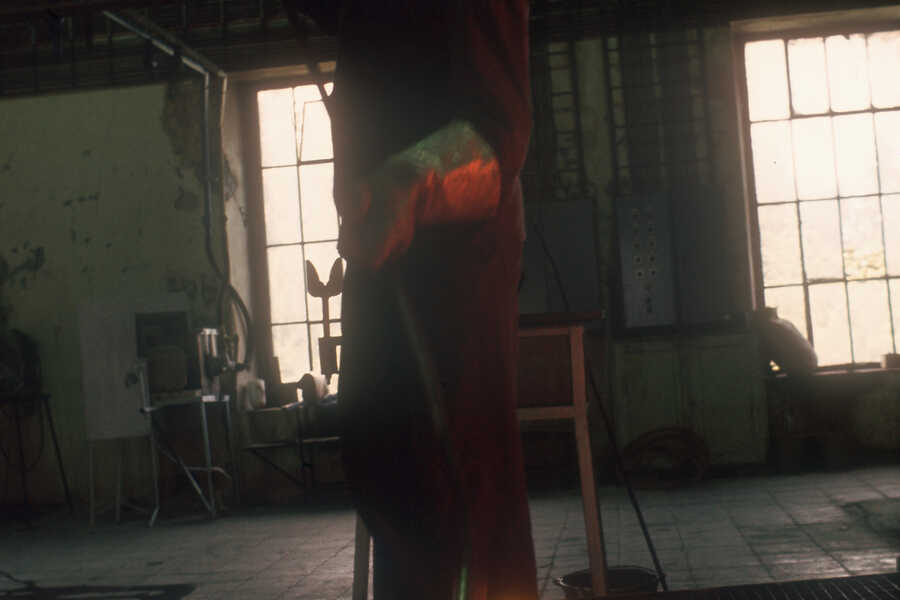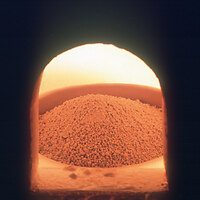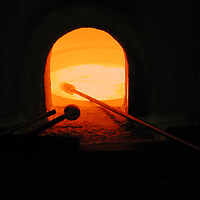Sand is the major glass forming component and sand of good enough quality is found in many parts of the world. Glass sand should not be too coarse and not too fine and should not contain more than 0,03% iron oxide FeO3 unless to make a green or brown glass where iron is a key colouring agent. Soda lowers the melting temperature of silica and act as a refining agent, while calcium is a stabilizer. A typical source for calcium carbonate is natural limestone, dolomite or marble, providing it contains less than 5-15% magnesium oxide MgO. Aluminum oxide Al2O3 is often a component in calcium rich dolomite. All traces of metal oxides and minerals must be accounted for in calculating a proper batch formula.
Main glass ingredients: sand / soda / limestone

70% Silica (sand) SiO2 , 18% Sodium oxide (soda ash) Na2O, 12% Calcium carbonate (lime) CaO melted at around 1320 degrees Celsius makes a typical glass which can be formed by blowing by mouth or machine, by casting, by pressing and by drawing.



